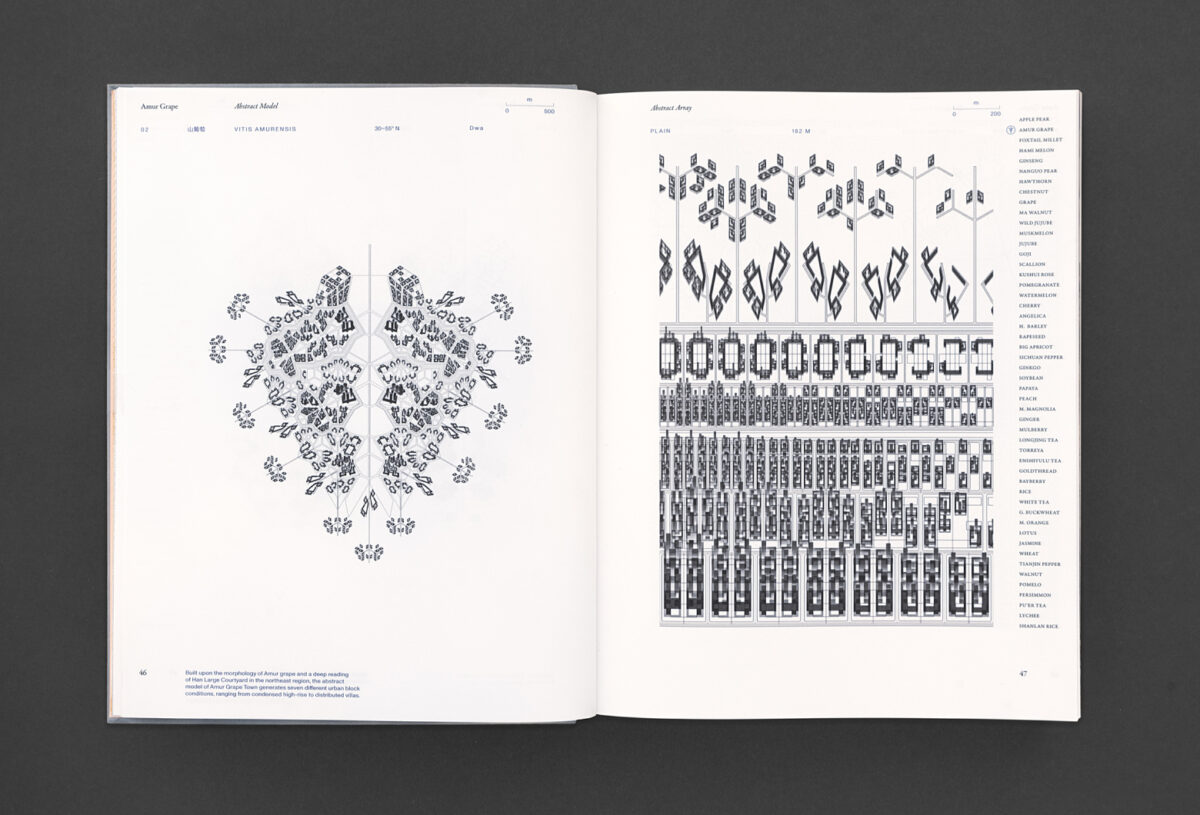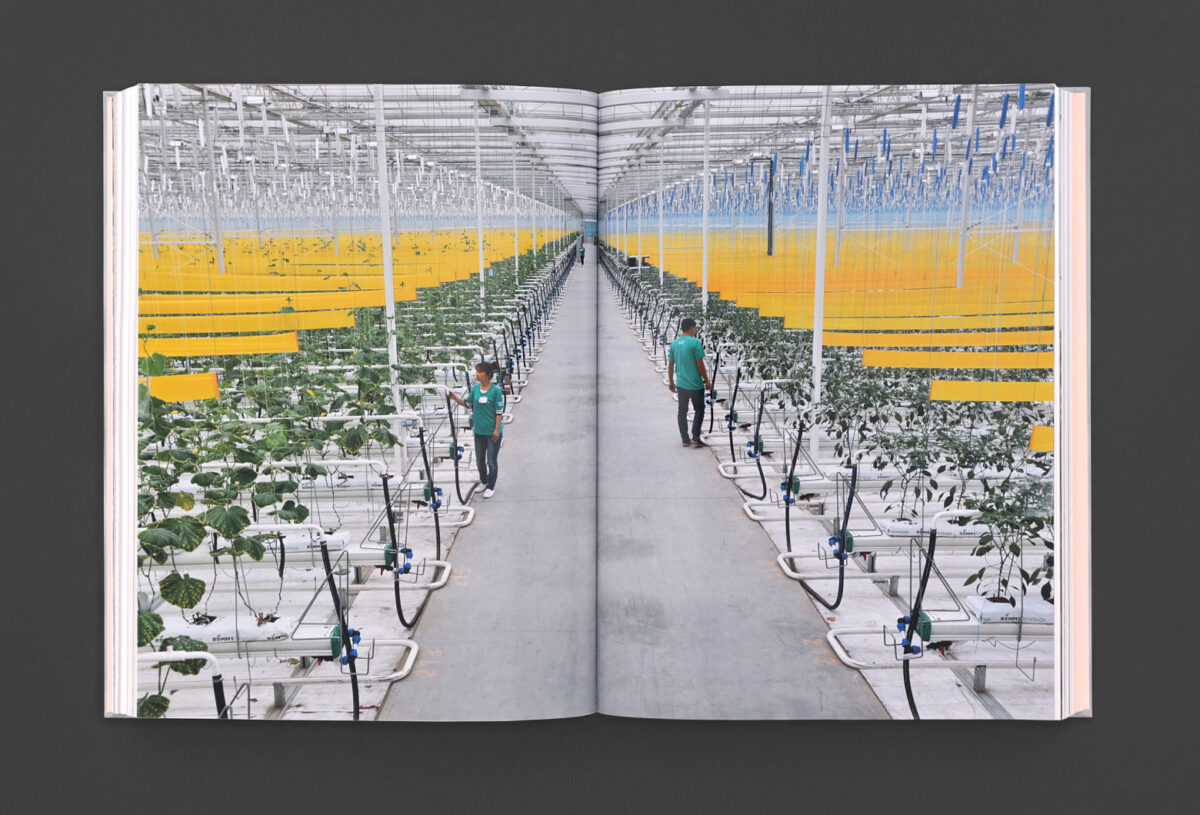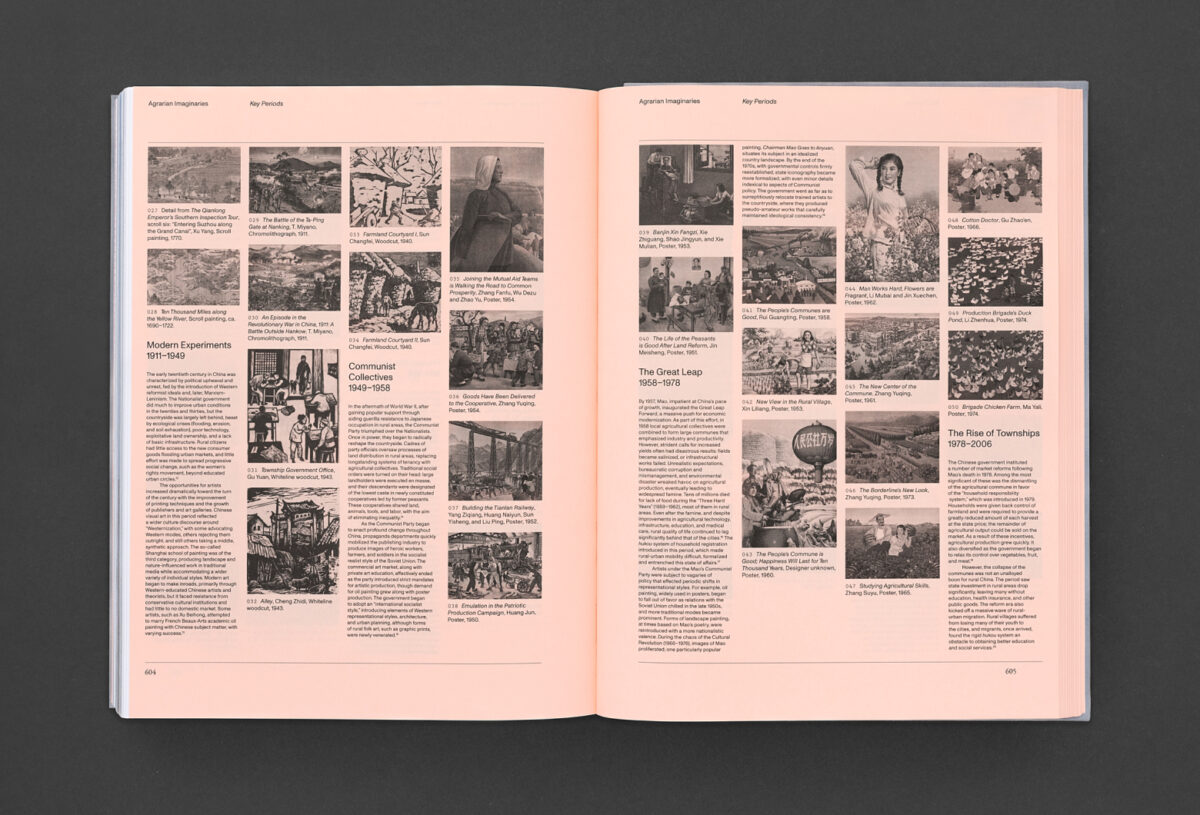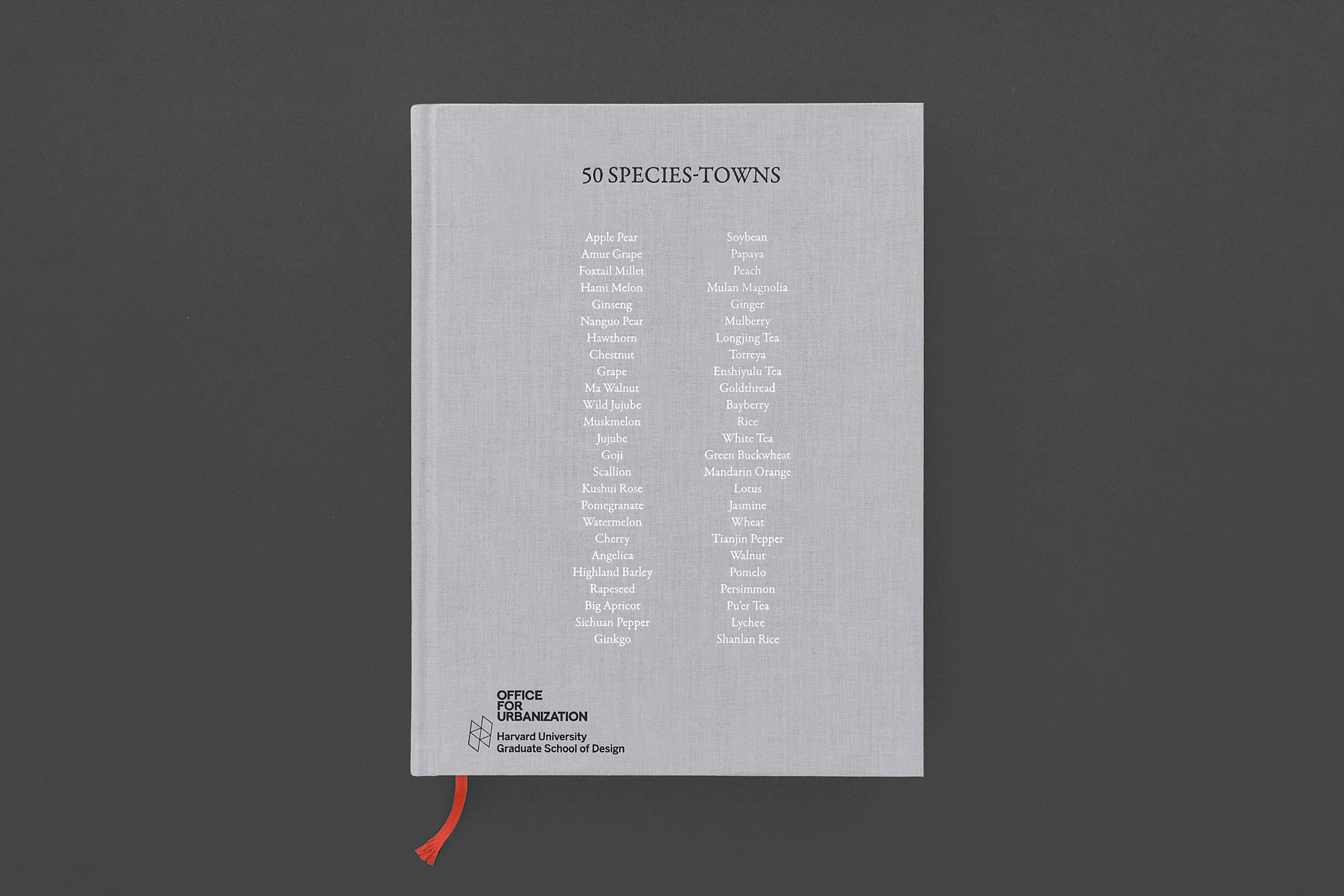50 Species-Towns

The product of a large-scale research project initiated by Charles Waldheim at the Office for Urbanization at the Harvard Graduate School of Design, 50 Species-Towns is a history, critique, and research proposal for a new approach to rural urbanization in China based on fifty “heritage crops” that are now under threat. The book proposes a new paradigm for development of agricultural towns centered on a “one town, one crop” model: “each species-town conceived as both product and producer of a regionally specific crop.” The book physically references an elegant horticultural manual with classical typography and a die-cut index that references each chapter: an extensive list of products from melon and pears to rice, white tea, pomelo, apricots, and scallions. The book structure follows the logic of the planning approach: each chapter defined by a plant and town. Illustrative analyses of growing patterns and agricultural methods are compared to urban plans and patterns of development. Cultural landscapes from respective regions are depicted in immersive photographic essays that depict the landscapes, agricultural methods, and people. An extensive index at the end of the hefty volume that includes research inputs, case studies, and new models is printed on thin pale orange fluorescent stock. Index themes – agrarian imaginaries (historical references and perspective), agrarian identities (an analysis of demographics and speculative profiles of diverse populations), morphologies (case studies of principle planning morphologies and new environmentally sound strategies) and typologies (new models for regional building) are depicted in an eclectic array of images, diagrams, and renderings.





